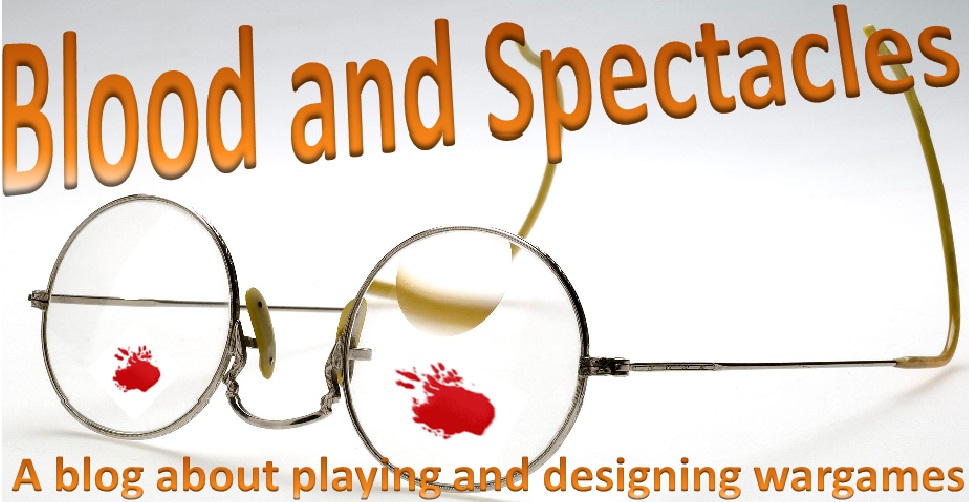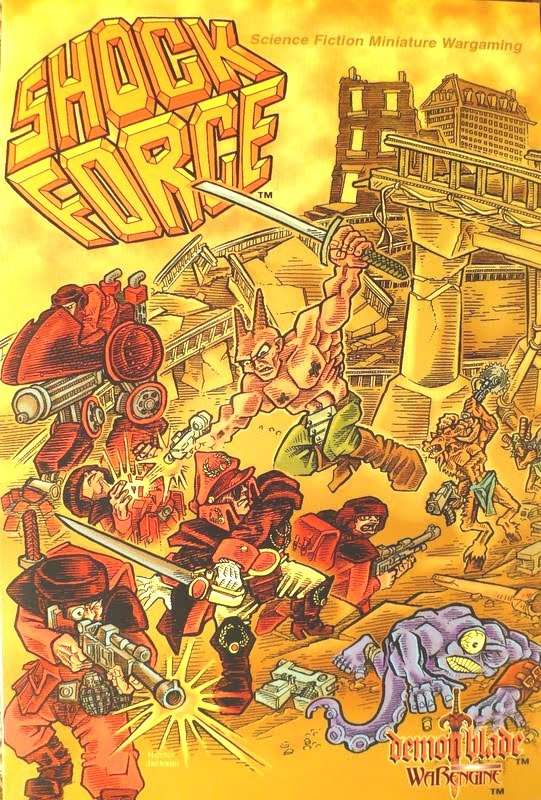I was directed to the Shockforce 2nd Edition
rules by an acquaintance on the Dakka Dakka message board. Eilif is a member of the Chicago SkirmishWargames Club and he has had exposure to a lot of skirmish games. If he points me towards a game, I tend to
take his advice. I found the rules on
the Wargame Vault and they are a “Pay What You Want” downloadable set. Therefore, the price is affordable.
The rules themselves are a skirmish set in the remnants
of a future America. There is a set of
army lists, but the main point is the WarEngine system that allows you to stat
up any miniature you want into the system.
That makes the rules look like a relatively versatile set for your
Sci-fi Skirmish needs.
So, let’s dig into the rules proper and see if it lives
up to expectations.
Things I liked
The game uses a dice system that reminded me of the Legend of the 5 Rings role-playing
game. In this game, you are given a set amount
of dice that you roll and can keep a set amount. Modifiers allow you to roll or keep more dice
depending on the modifier. These are
opposed rolls, so the player with the higher roll is the winner with ties going
to the defenders. This is an interesting
dice mechanic and I am glad to see it applied in a different game.
The game gives each unit a leader who has a command radius.
The command radius seems to be between 6
and 10 inches usually. Troopers outside
of the leader’s command radius operate marginally less effectively than ones in
radius. This is a method to create unit
coherency as a bonus, but not required part of the game.
A unit can be forced to test for Routing because of
casualties and/or because their leader was killed. Troopers in control could stay in the game,
while uncontrolled troopers run off. This
is another nice touch to encourage unit coherency but not force it.
There is a “Massed Attack” rule that allows multiple
lesser enemies to gang up on a larger, better enemy and potentially take them
out. This applies to ranged and/or close
combat attacks. This means that units working
together can be more effective against larger targets.
Things I Did Not
Like
Units can move and shoot as many times during activation
as they have movement and shooting.
Typically, I prefer a bit more restriction. It seems a bit counter-intuitive but it
forces you to make choices. Troops can’t
always do what you want them to do when you want it.
The game has a decent amount of modifiers, but sometimes
they can be challenging. How many extra
dice do you get, and how many do you keep?
Some of the modifiers once you include tweaks and powers can be a bit
much. You will definitely want reference
sheets handy for your units as I don’t recall seeing a QRS in the booklet. I am getting to old (and play too many games)
to remember all of these details.
Movement in Shockforce is in multiples of 3. Therefore, many of the movement ranges can be
pretty large with the average Move looking to be 9 to 12 inches. That means units will be moving pretty
rapidly. Shooting is only 18-24 inches
for the most part so there you go. Maneuver
and assault will be the focus of the game.
Much of the book is dedicated to the Shockforce
background. It makes sense but I wasn’t
that interested. It is more useful to
help you understand and balance your own custom units. However, it takes up the bulk of the book.
Meh and Other Uncertainties
Meh and Other Uncertainties
The turn starts with an initiative check, and the highest
can decide to go first or second. Play
is alternate activation. When a unit is
activated they do all their moving and shooting.
The game has a resource management system with the use of
Hero points. Forces buy a certain number
of hero points that can be used by any model, up to their limit. The Hero points
can be added to the dice roll results to try and guarantee a hit or avoid
one.
The game allows you to customize your forces. In theory this is really cool. However, the method of doing it can get a bit
clunky. You have personal points, tweaks
(good and bad), weapons, and special powers.
This makes it more of a toolbox than anything else. It feels like building and customizing your
own forces could take a while and is best done prior to the game.
Final Thoughts
The Evil Monkeigh from the Delta Vector blog claims that
all wargames designers start their career by trying to make a better 40K. I can’t shake the feeling that this game was
spawned out of a desire to make “better” 40K rules. The mechanics are very different from any
edition of 40K, but there are some signs to me.
Realistically, it might be someone trying to make a sci-fi version of a Legend
of the 5 Rings tabletop game too.
The most interesting feature of the game to me is the
lack of “Coherency” rules. Troopers out
of coherency can still act as normal, but just not as well as when they are in
command radius. This is an interesting way
to encourage units sticking together but they do not have to. This is an idea I would like to explore
further and reminds me a bit of A World Aflame.
The WarEngine is cool, but a bit clunky. The core mechanics seem designed for single
model skirmish style game, but the game structure seems to be squad on squad. I think the mechanics will work fine for a
handful of models a side, but squad vs. squad would get really clunky. To be honest, after reading the rules I am
unsure how the makers intended the game to be played.
I do not see myself playing this game further.
I do not see myself playing this game further.


No comments:
Post a Comment